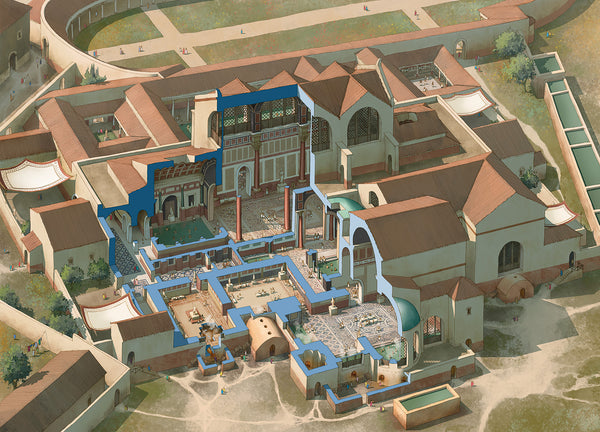Greek Colonies and Cabbages in Croatia
By Owain Williams
For lovers of ancient history, holidays can often revolve around travelling to places with a wealth of history and a plethora of archaeological sites to explore (I know I tend to). The obvious candidates for holiday locations are Greece and Italy. Both countries have no shortage of places to explore. However, there are so many other places that have just as fascinating sites and histories as Greece and Italy. One such place is Croatia, on the east coast of the Adriatic Sea.

The most obvious location for any ancient history buff is the city Split. Founded as Aspathalos by the Greeks in the Hellenistic period, possibly on the site of an older Illyrian settlement, the city was a relatively minor one in the ancient world, overshadowed by its close neighbour, Salona. However, in the beginning of the fourth century AD, Diocletian settled there for his retirement so he could grow his cabbages in peace. Unlike many other ancient ruins, those of Diocletian’s Palace – a villa designed like a Roman fort – is still inhabited today, and has been for over a millennium, after many of the inhabitants of Salona, when their city was sacked by the Avars in the seventh century, fled there. The narrow, winding streets, crossed by ancient arches and modern washing lines, are quite the sight. Diocletian’s Palace is not the only sight to see in Split, however. The ruins of Salona are just a short bus ride away, at the nearby town of Solin, featuring an impressive amphitheatre, among other things.
A bit further away than the ruins of Salona are the many islands of Croatia – there are over 1000, apparently – with plenty of history. Split’s port is always busy with ferries, so there are plenty to choose from, with catamarans offering a smooth, speedy journey to islands like Vis, Hvar, and Korčula. These islands were home to the Greek colonies of Issa, Pharos, and Melaina Korkyra, respectively, founded as part of the Adriatic empire of Dionysus I, tyrant of Syracuse. Unfortunately, these sites are not so thoroughly excavated as more famous locations, but there is still a lot to see there, especially in the local museums, such as the impressive Lumbarda Decree – an inscription recording the establishment of the Greek colony on the island Korčula – and the islands are far less busy than Split, so they are a good place to slow down after the city’s busy narrow streets. This isn’t even going into the excellent food and wine you can find on the islands. For example, there is a wine to be found only on the island of Korčula, Grk (Croatian for Greek), which is traditionally believed to have been introduced by the Greeks when they came to the island (although, there is no connection, apparently).

Having recently visited Croatia, I can attest to just how beautiful it is, especially the Dalmatian coast around Split. The people were very welcoming, the food and wine was exquisite, and the sights, from the clear waters of the Adriatic to the ancient walls and Medieval buildings, were stunning. It is definitely a good place to go on holiday for history lovers (I didn't even get into the Medieval history).


1 comment
Thank you for this nice piece! I visited Split and the ruins of Salona in 2019 with the study association of Greek and Latin Language and Culture of my university and the ancient and medieval sights are indeed quite amazing. If I’m there again sometime I will make sure to visit the islands.